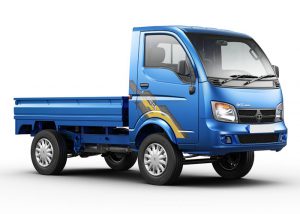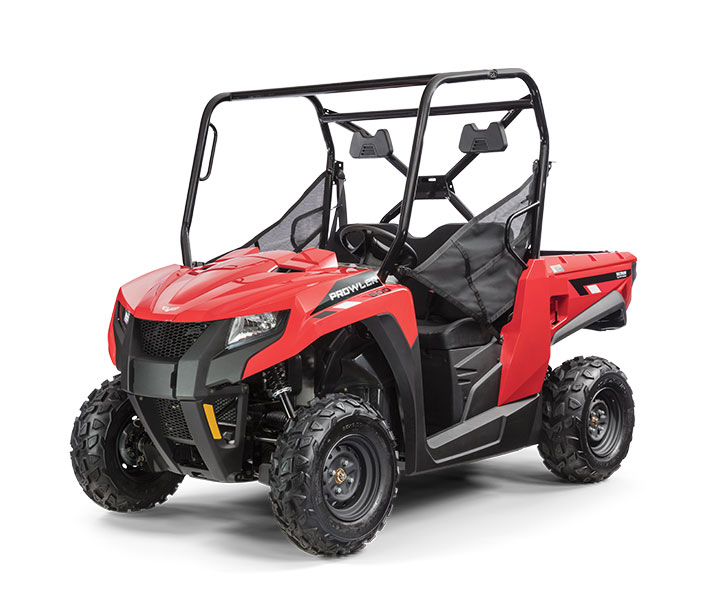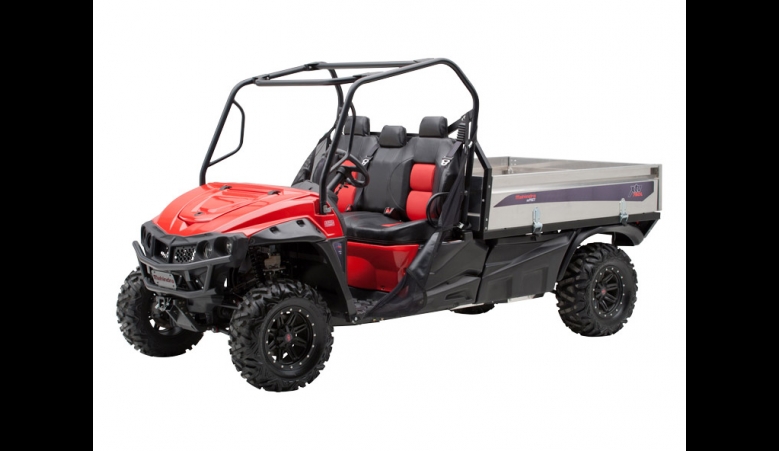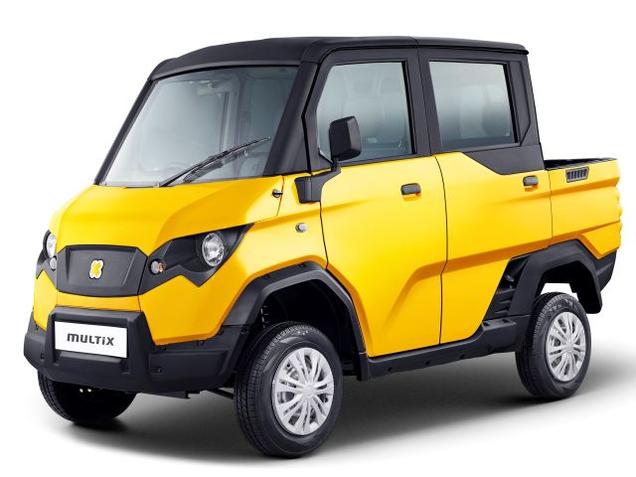Marc Cesare, Smallvehicleresource.com

The electric powered Arcimoto SRK is expected to be available later this year.
I have come across a number of articles recently focusing on autocycles and I thought this might be a potential product development direction for STOV manufacturers.
First, what is an autocycle? It is basically a three-wheeled vehicle such as the Slingshot by Polaris, or offerings from start ups such as Elio Motors and Arcimoto. There is no standard definition for an autocycle in the US or other countries. In the US, an autocycle is typically classified as a motorcycle, although not always, as Polaris discovered with their Slingshot. They have had to work with some states to develop legislation to allow their vehicles on the road. (See how the classification for the Slingshot varies by state.)
The benefit of being classified as a motorcycle is that the vehicle does not have to conform to more expensive automobile safety standards. This benefit is key to providing STOV manufacturers with a new product opportunity. In particular, I believe Polaris and the golf car manufacturers are well positioned to produce a more practical neighborhood electric vehicle that can provide a good value proposition in relation to street legal golf cars (new or used), low speed vehicles and lower priced highway capable cars.
Now Polaris already has the Slingshot, but this is more of a recreational vehicle designed for those interested in a motorcycle like experience with a greater sense of safety and requiring less driving skill. The Slingshot is highway capable, features a gas engine and pricing starts around $22,000. The not yet in production Elio Motors autocycle is also gas powered, highway capable and has a base price of $7,300. The electric powered Arcimoto SRK is expected to be available this year, has a top speed of 80 mph and starts at $12,000 for the 12kWh model which provides a 70 mile range. Like Slingshot, the Elio and SRK provide seating for two but they are placed front to back rather than side to side as in the Slingshot. All three feature two wheels up front and one in the rear.
While all three of these vehicles are capable of highway speeds, I propose that there is a real market opportunity for a medium speed vehicle (MSV). The medium speed, say up to 40-45 mph, would make the vehicles more practical to use for personal transport than golf cars or LSVs which top out at 19-25 mph. STOV manufacturers have pushed for a MSV designation but NHTSA has not been willing to budge on the costly safety standards for four-wheeled vehicles. This is why the motorcycle/autocycle classification is critical to this opportunity. A MSV autocycle would be a more viable second vehicle for many households and a more versatile neighborhood vehicle for those in gated or retirement communities.
The vehicle should also be electric powered to maximize the environmental benefits and also take advantage of electric motorcycle incentives where available. An electric autocycle would provide a significantly less expensive electric vehicle option to green consumers than the currently available electric cars. A MSV would also require a smaller battery pack than a highway capable electric autocycle, further reducing costs. Of course, a highway capable option could be made available but that would start driving up the costs.
Besides the aforementioned startups, who is positioned to develop these type of vehicles? Polaris is an obvious choice. They already have experience designing, engineering and producing an autocycle and they are innovators. They also have been acquiring electric drivetrain technology (Brammo) and electric vehicle brands such as GEM, Goupil and Taylor-Dunn. It is a vehicle that could potentially fit nicely into their portfolio of the brands that are sold internationally. The biggest challenge for Polaris would be distribution. A MSV autocycle would probably not be a good fit for their powersports dealers, as the customers would be more transportation than recreation oriented. Their brands such as Goupil, Taylor-Dunn and even GEM are geared more towards the commercial customer. Polaris might have to partner with another company to access the right distribution channels.
This brings us to the golf car manufacturers. They have the expertise in developing and selling electric vehicles, but not necessarily the three-wheeled variety and have been more focused on lead acid battery packs. One could argue that they also haven’t been that innovative. They do however have the right distribution network. Their customers are already coming to them for personal transportation solutions.
A MSV autocycle could find a home in Textron’s (maker of E-Z-GO) Specialty Vehicle division which encompasses a wide range of small, task-oriented vehicles. They have also been striking out into new territory with new ATV and UTV products under the Bad Boy Off-road brand. Another option is Yamaha Golf Car, although they are the smallest of the big three manufacturers. This leaves Club Car. As a subsidiary of Ingersoll-Rand they certainly have the financial wherewithal to develop a vehicle on their own, and they may be the best fit for a partnership with Polaris. Unlike Yamaha and Textron they do not compete directly with Polaris in the recreational UTV space. They are also considered by many to be the highest quality brand of the three and have over 600 distributors, dealers and factory branch locations.
It will be interesting to see if the autocycles from Elio and Arcimoto prove to be popular and encourage other manufacturers to join the fray.
Learn more: Arcimoto.com
Learn more: Eliomotors.com














